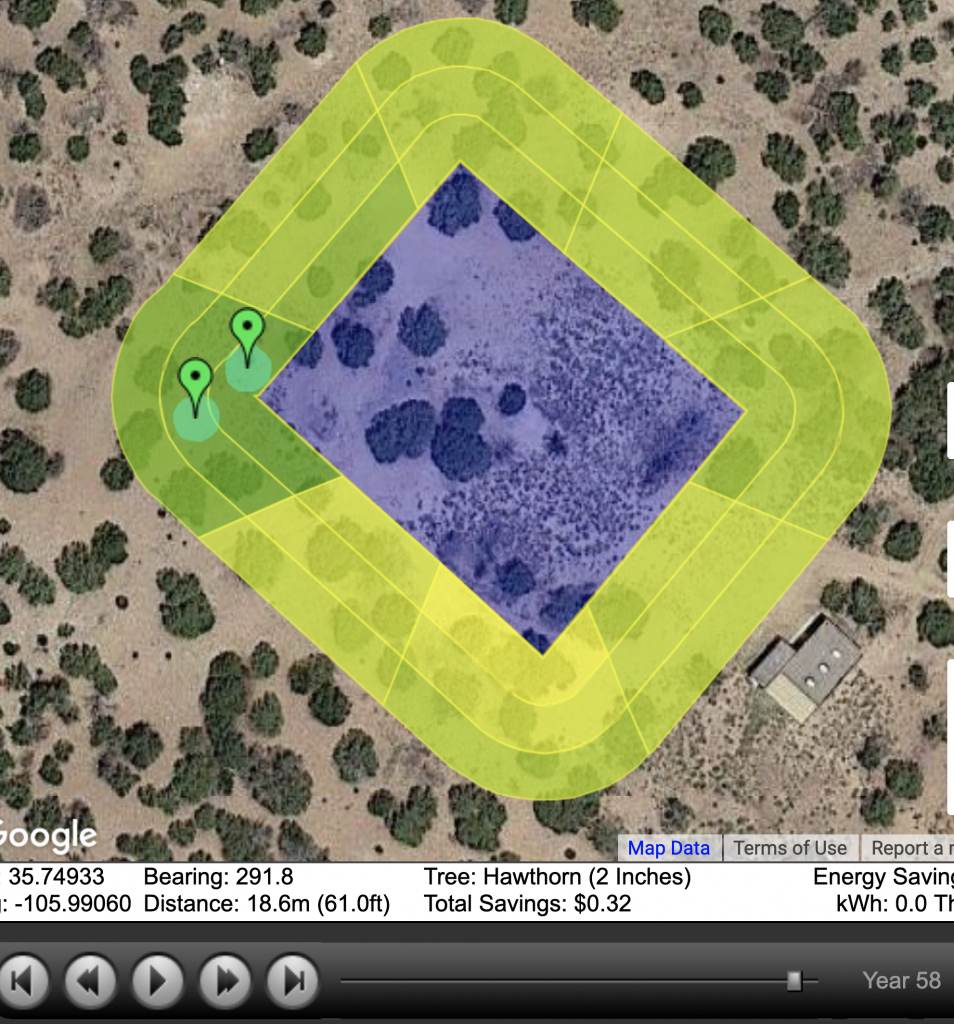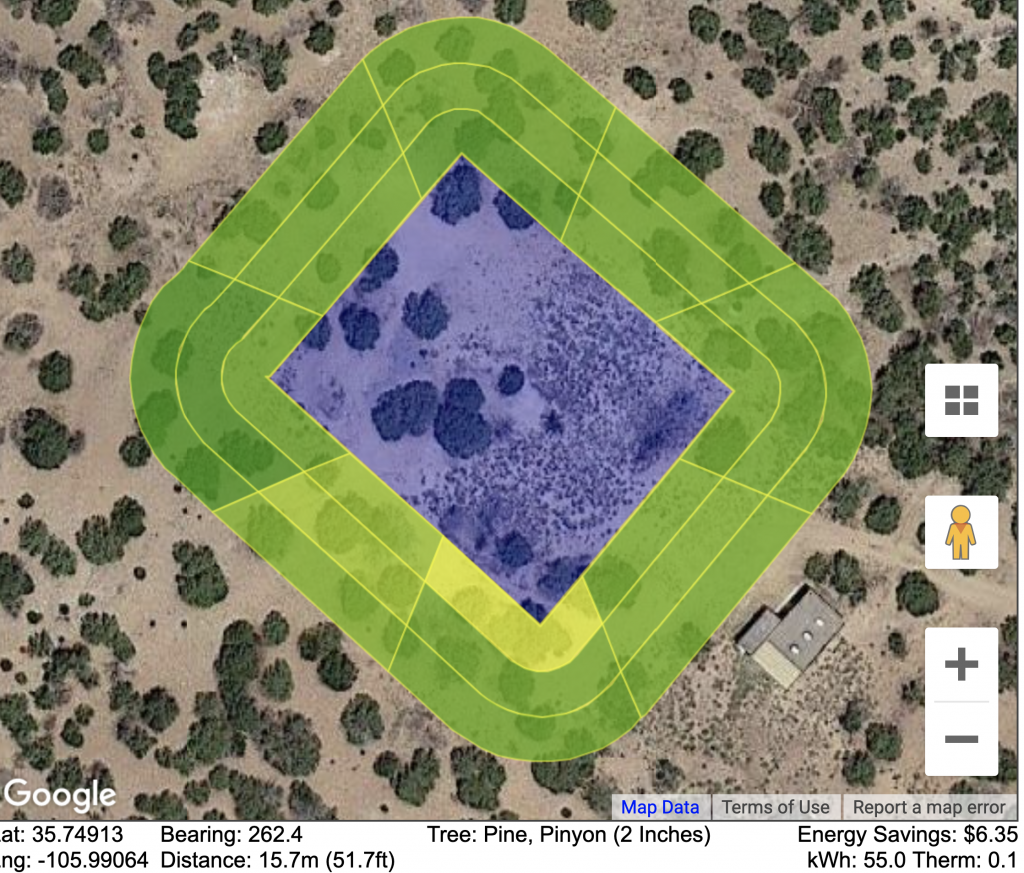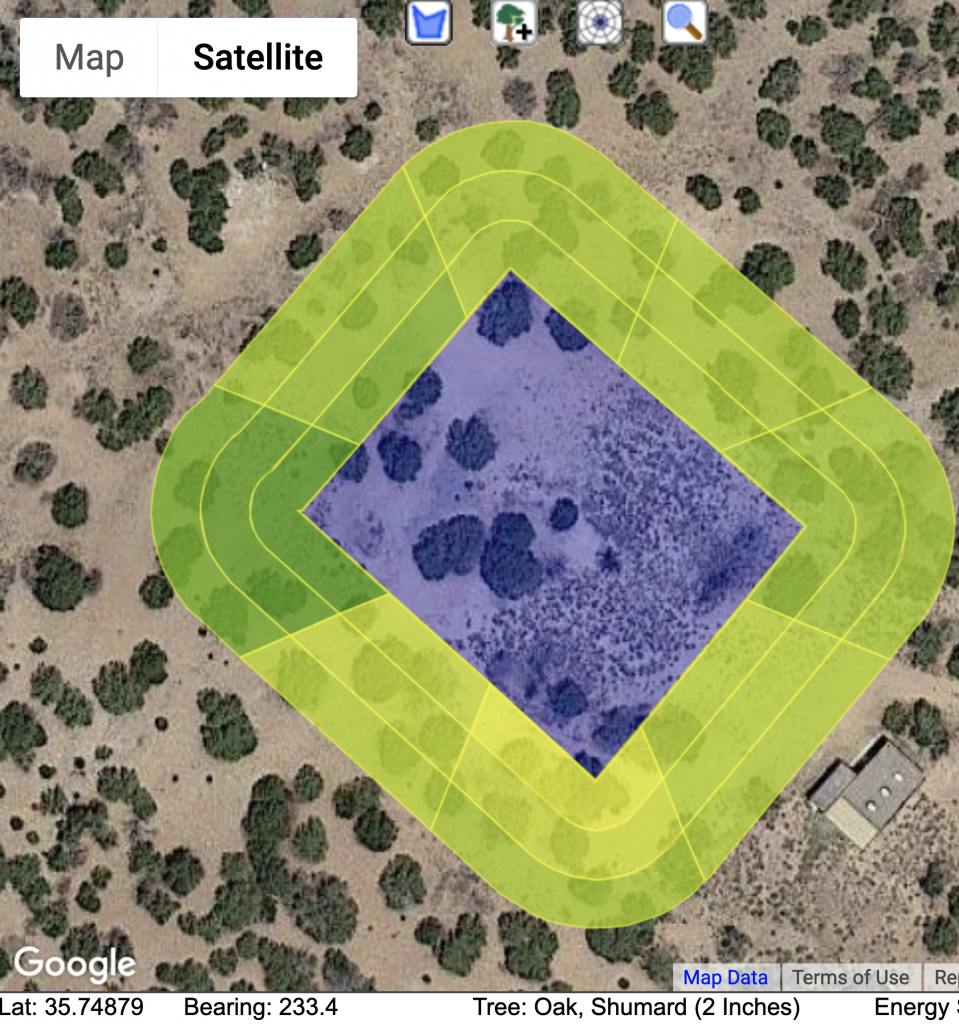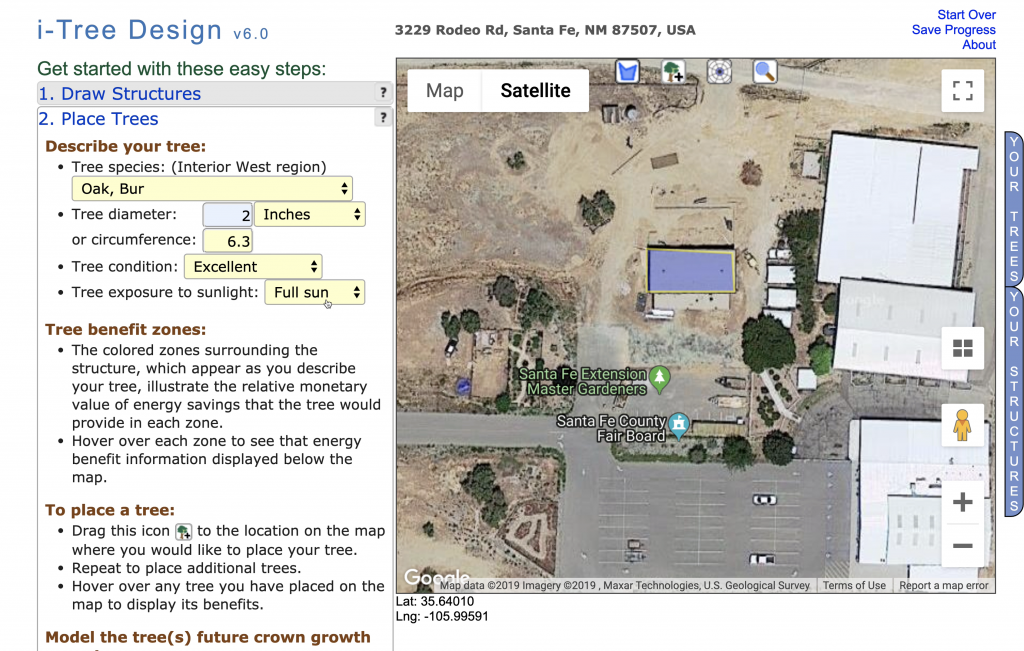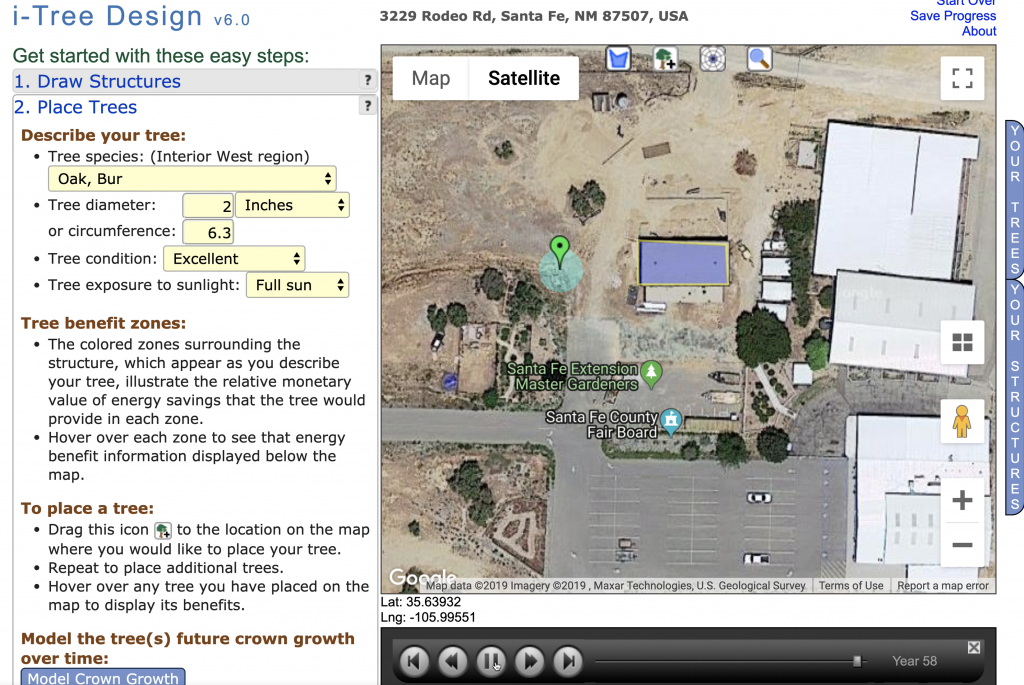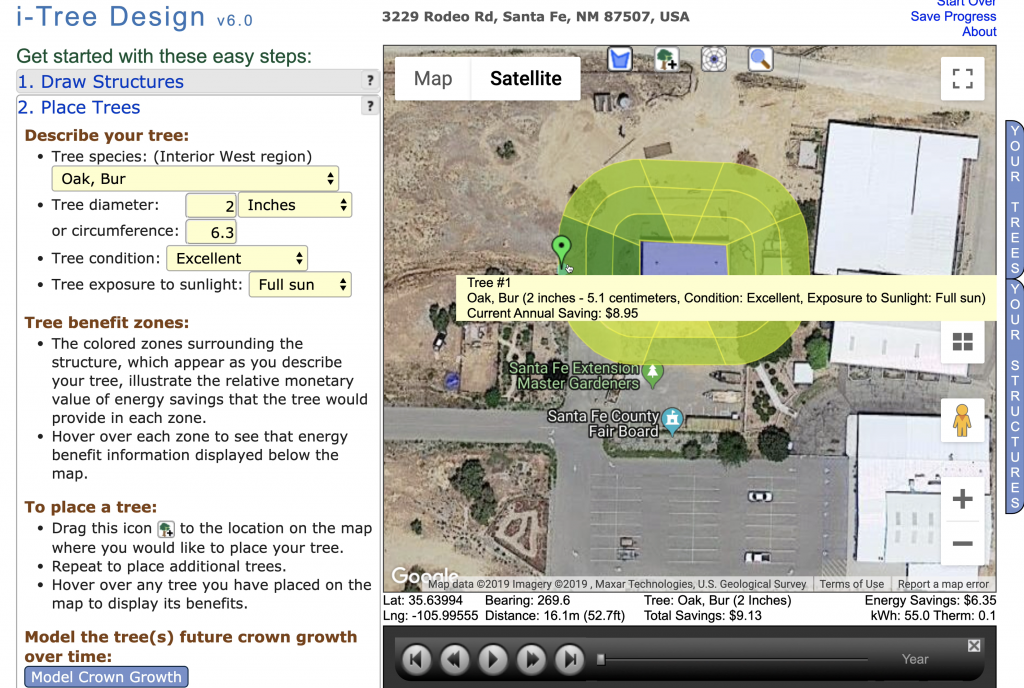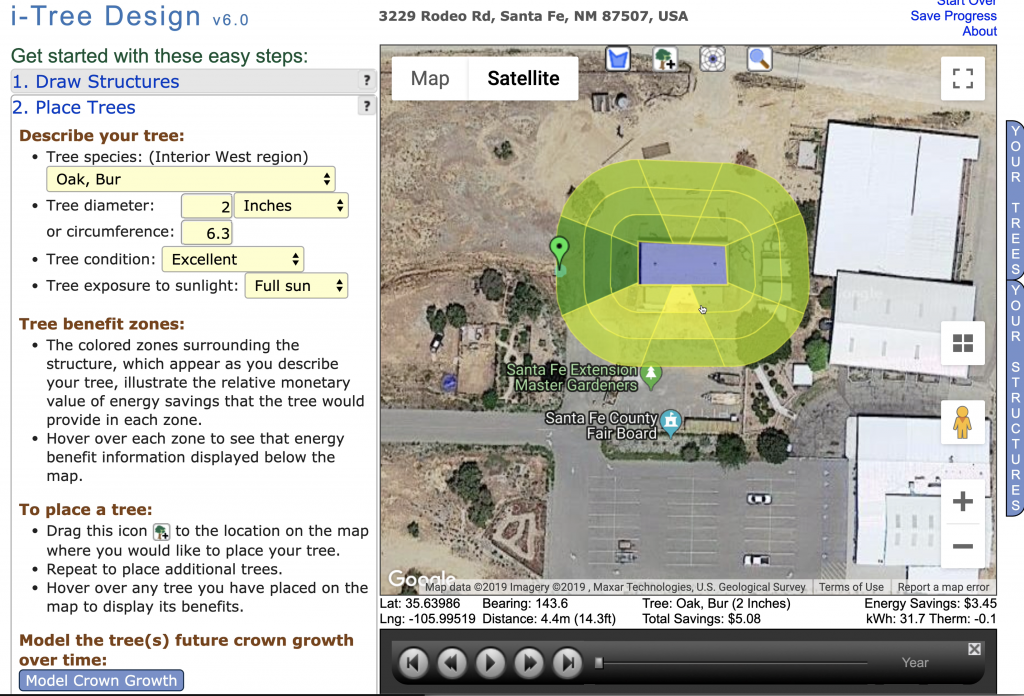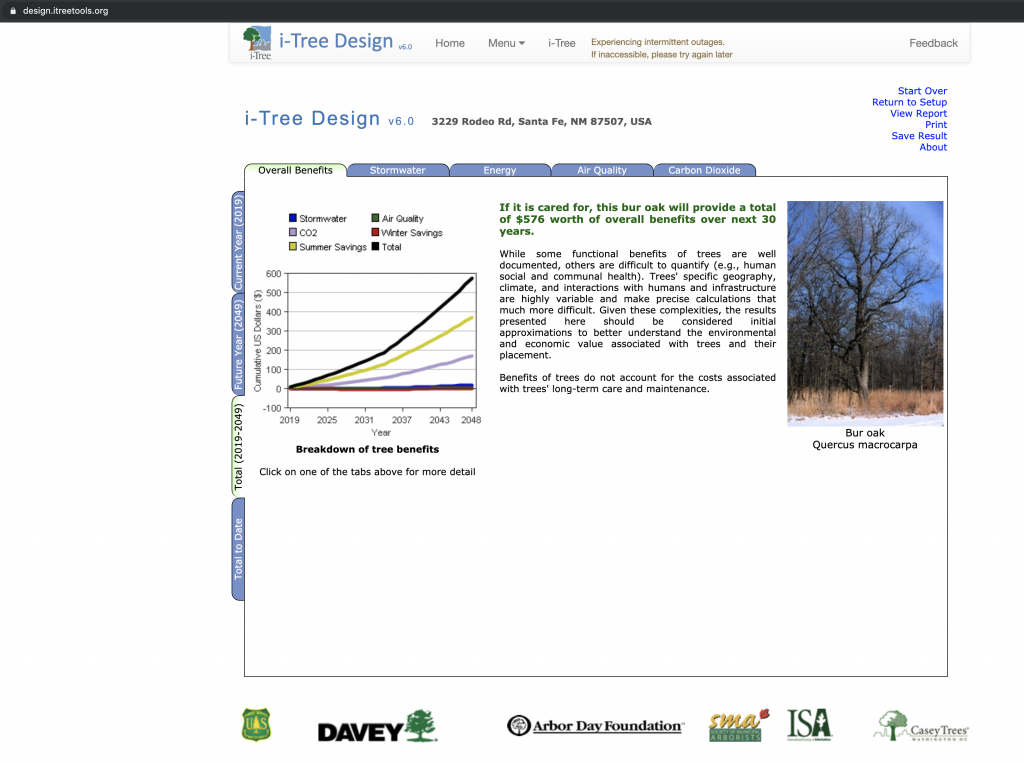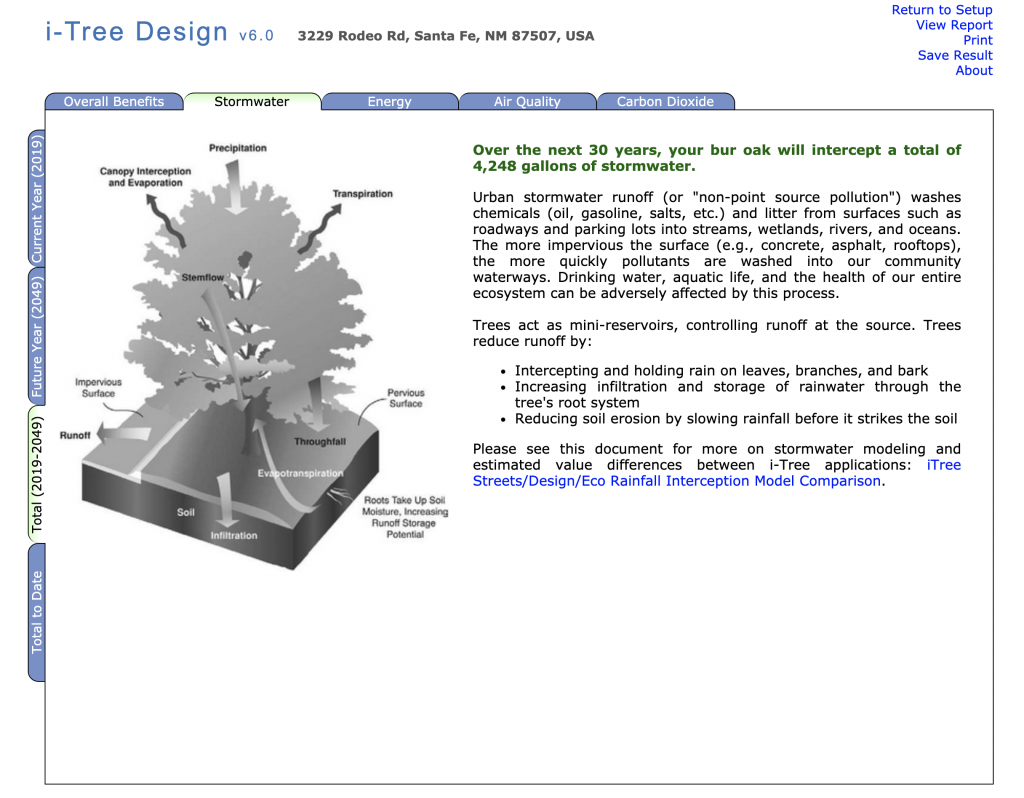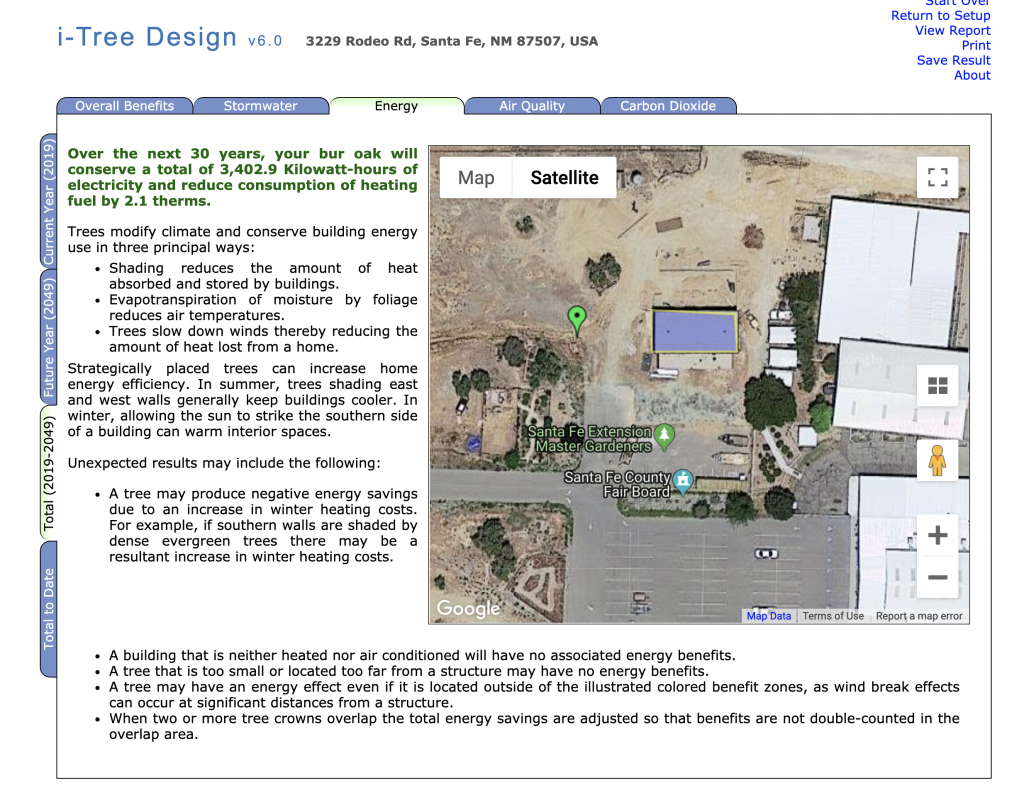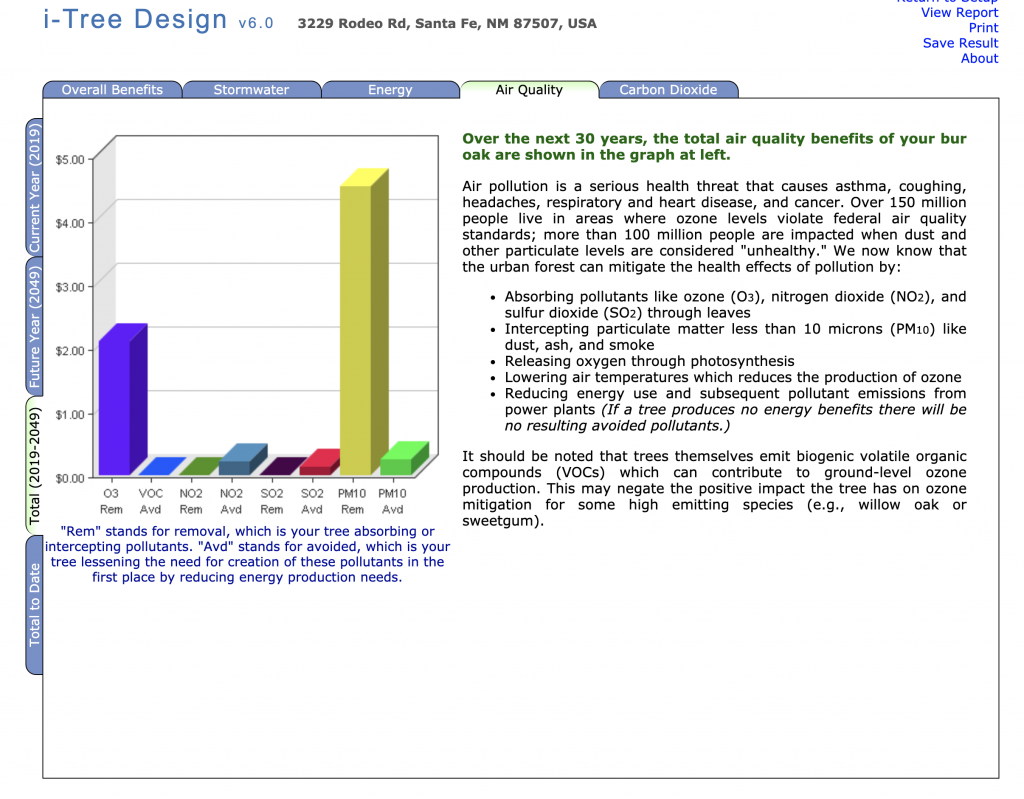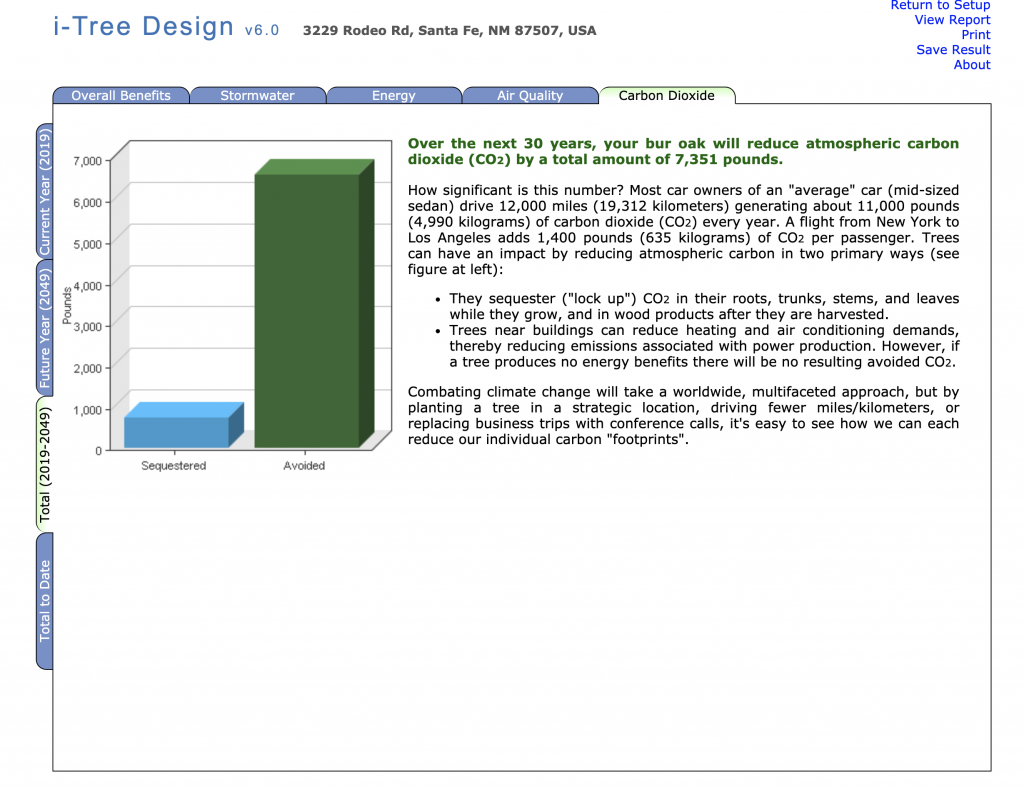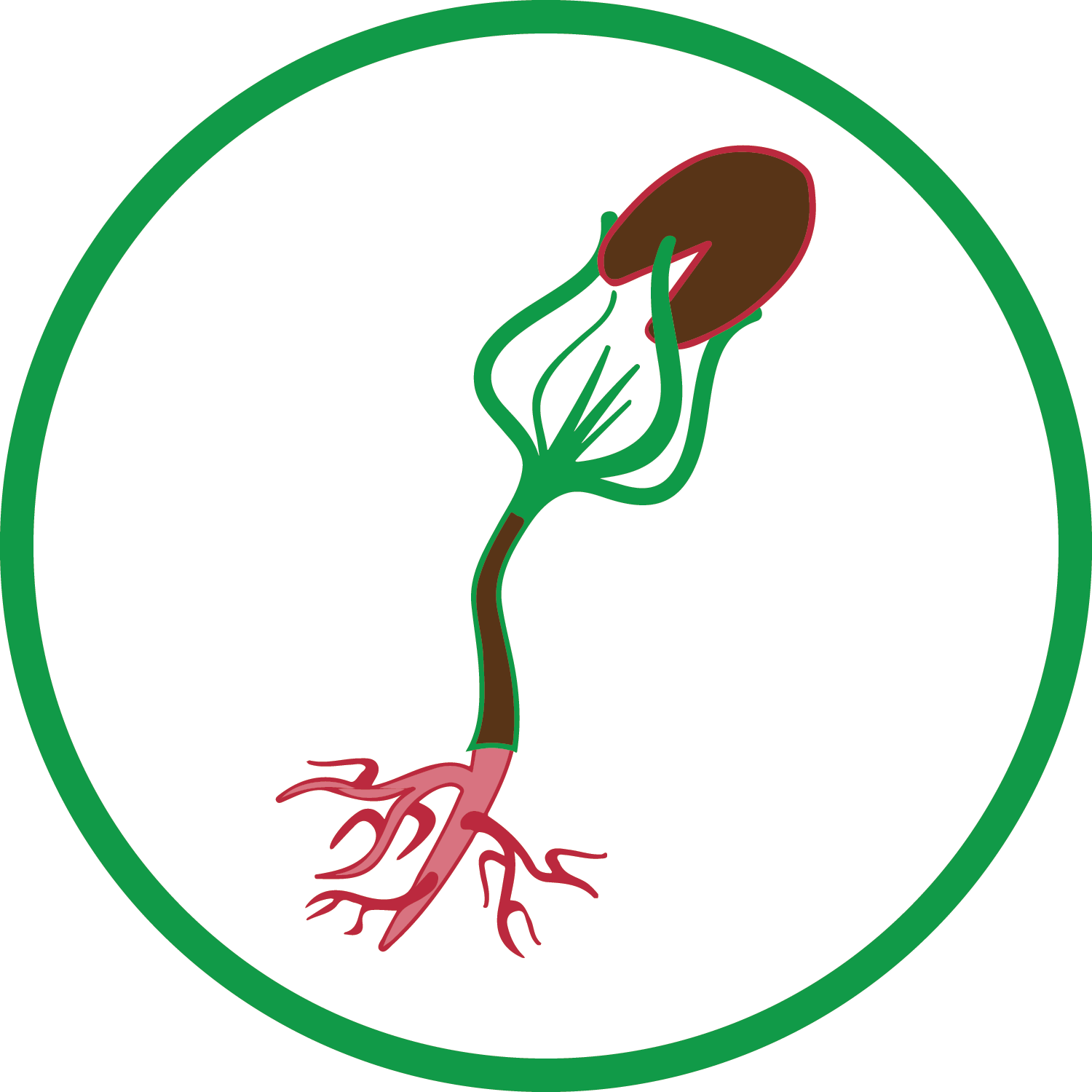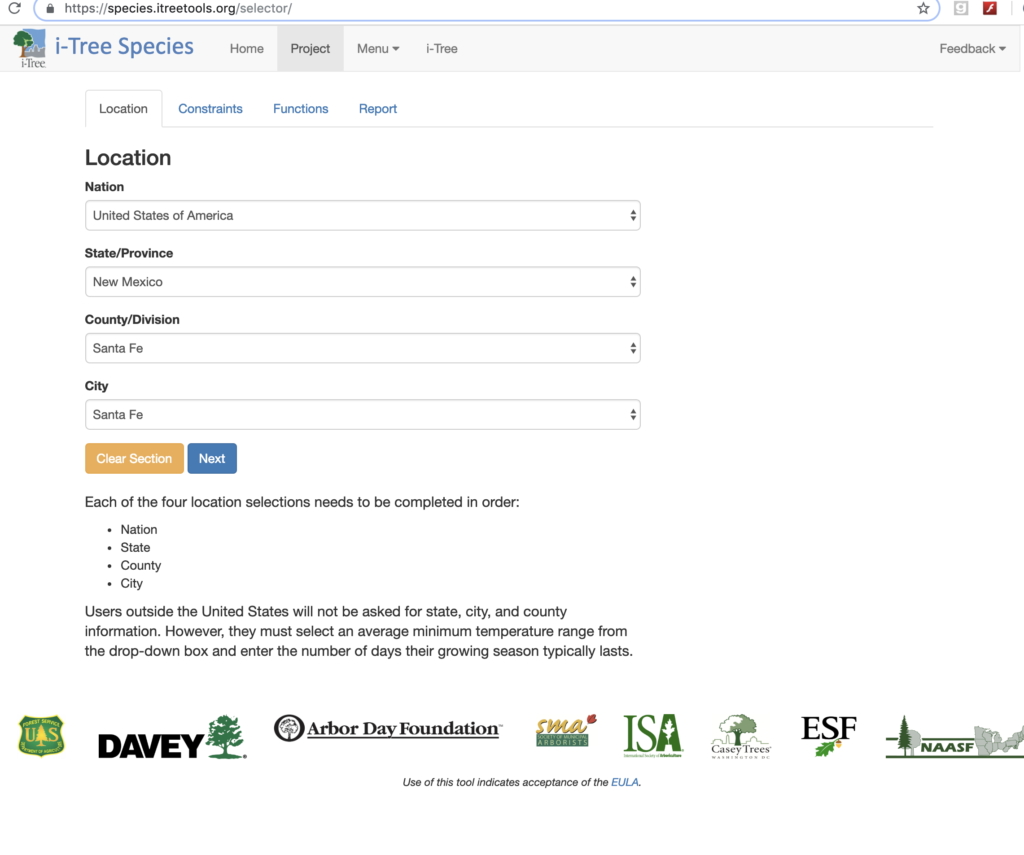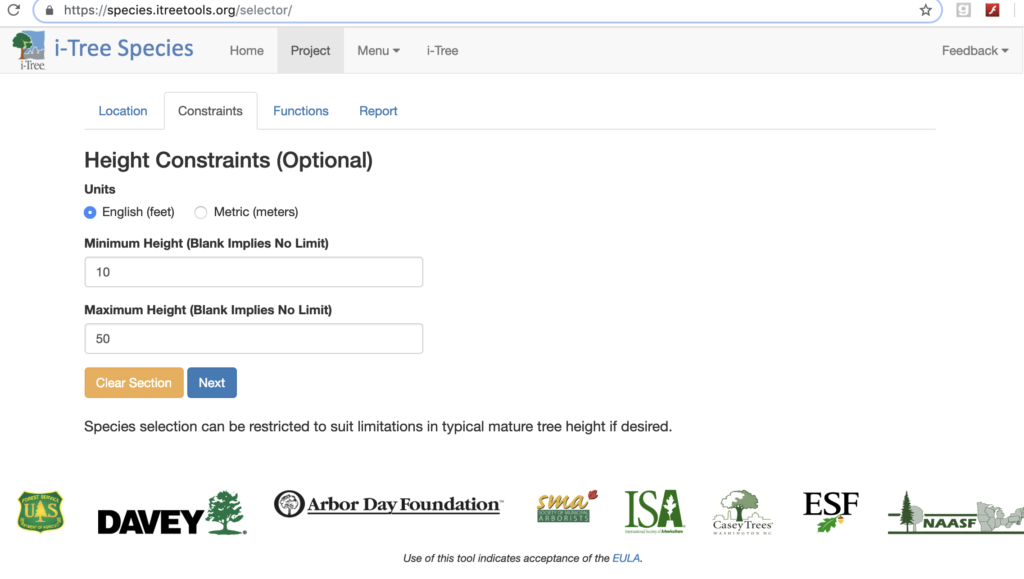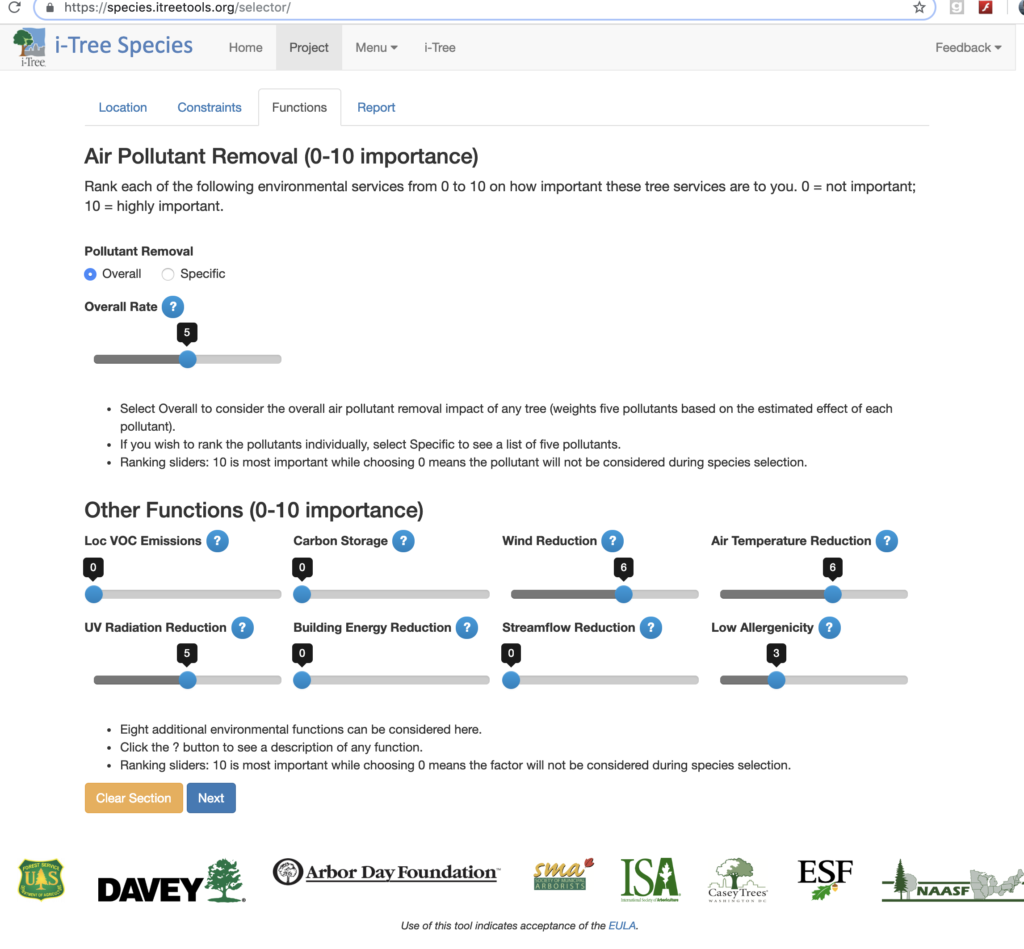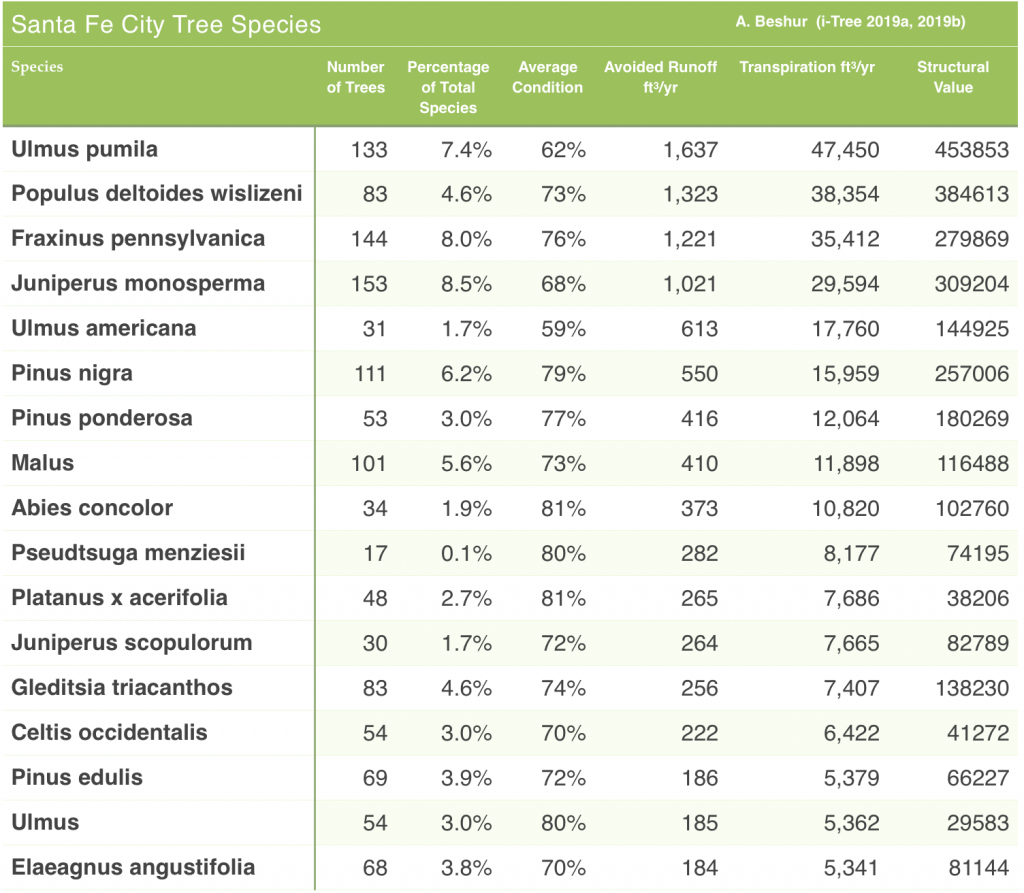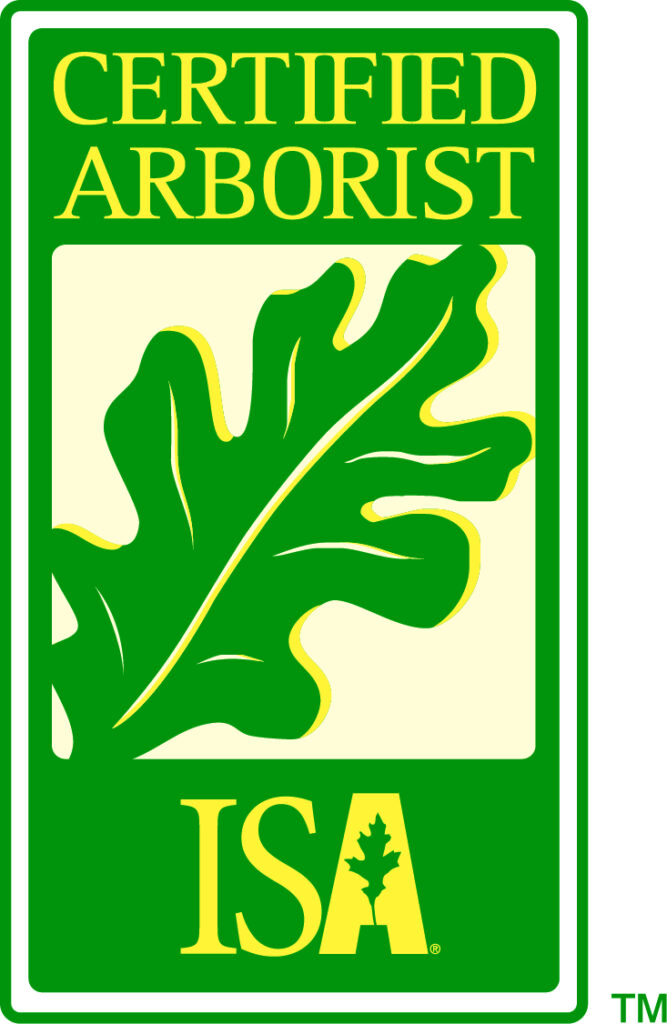Your cart is currently empty!
Trees
As an urban forestry design company, Seeds of Wisdom cares deeply about trees and has years of experience with species selection, planting, pruning, and other aspects of tree care. We also use a variety of tools and systems to learn about and document trees, from single specimens to an entire city’s worth.
To grow urban trees to peak ecosystem benefit, they need to be the type of tree for the region and given 1500 cubic feet of non-compacted soil volume. Analysis of the 1,791 (and counting!) trees in the Santa Fe trees inventory project shows that these can transpire up to 336,343 cubic feet per year. They mitigate 11,600 cubic feet per year of stormwater runoff. They sequester 7.925 tons of carbon and store 482.6 tons, which is valued at $82,300. These trees, which represent a mere 16% of the public park system, have an overall structural value of $3.47 million. Public park trees only represent a small fraction of the total urban forest, as most trees are growing on private property. Figures are based on i-Tree Eco algorithms for Santa Fe, NM.
Tree Inventory Project
With the Extension Master Gardeners and the Santa Fe Municipal Tree Board, Athena Beshur co-created the Santa Fe Public Spaces Tree Inventory Project, and Seeds of Wisdom continues to work on it. We have contributed to inventories of several parks over the past few years. To learn more about the Tree Inventory project, please visit the links below:
2023 i-Tree Report
Below is a selection of pages from the latest set of i-Tree reports analyzing trees in Santa Fe’s open spaces. In addition to tree species found in Santa Fe, these reports also detail their distribution, size, ecosystem benefits, and more. To download the full reports, please visit our Scholarly Articles and Reports page under the Urban Forestry Research menu, or click the button here.
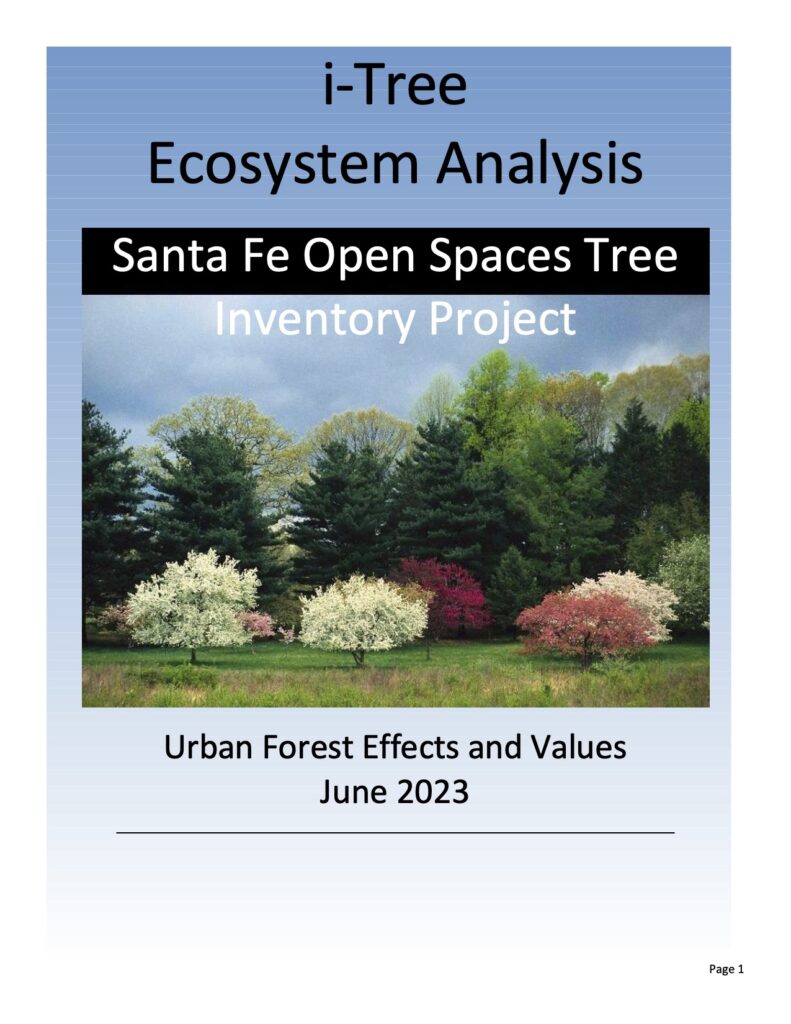
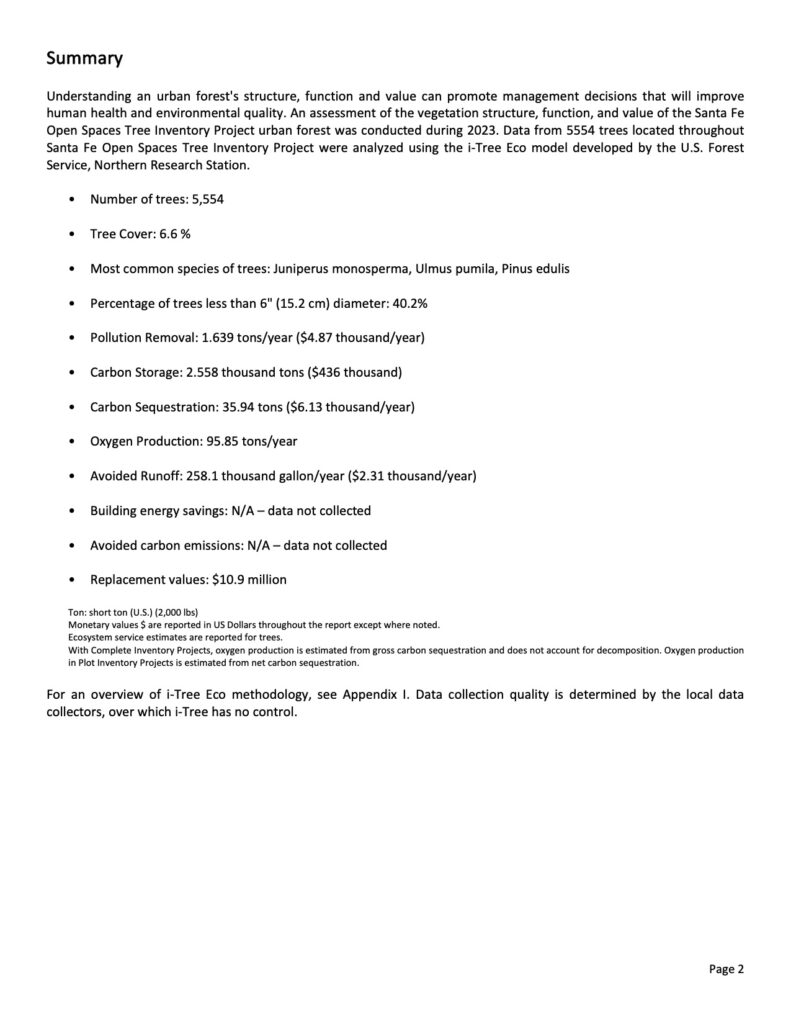
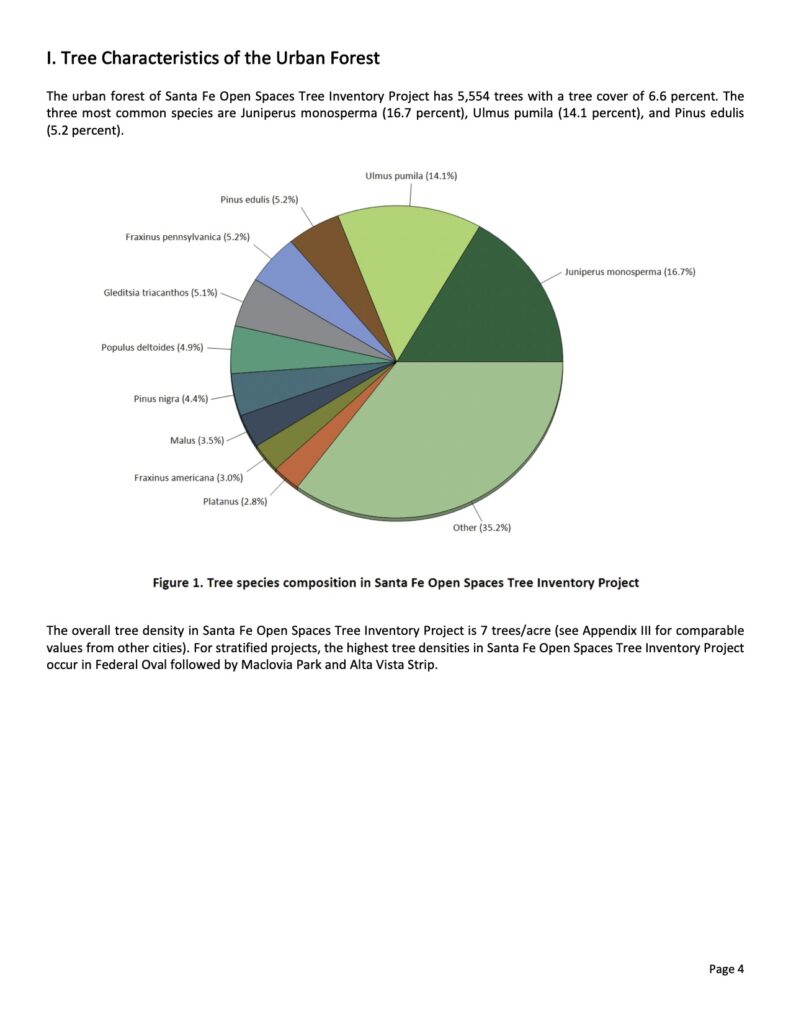
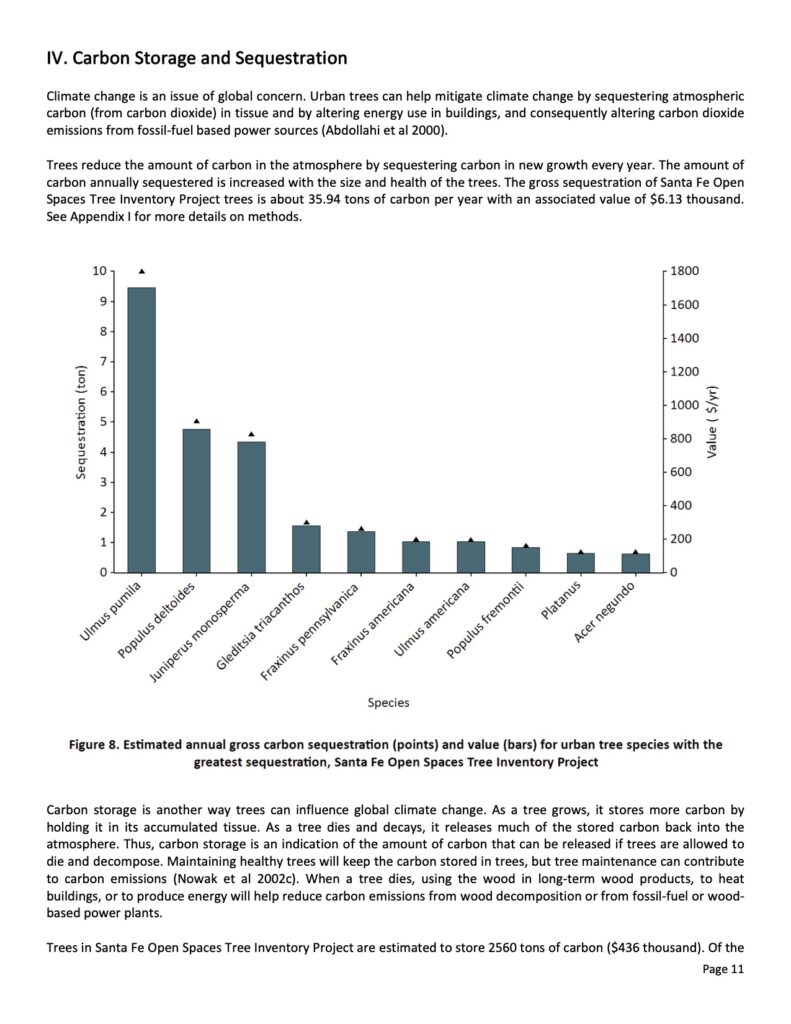
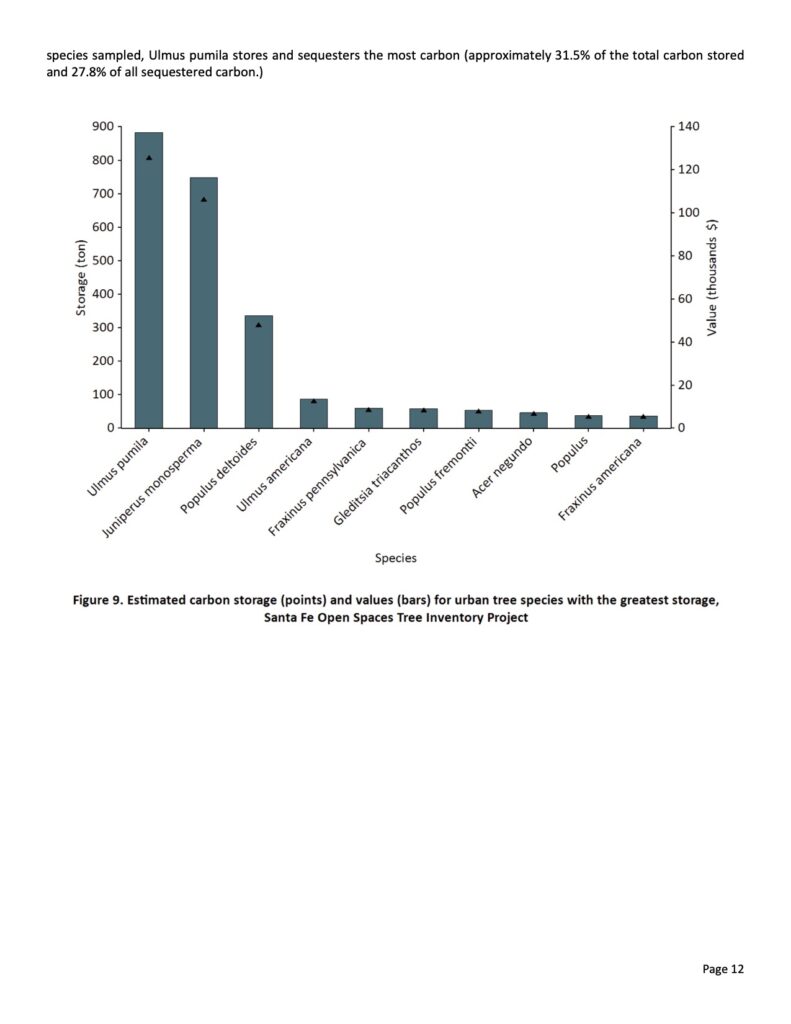
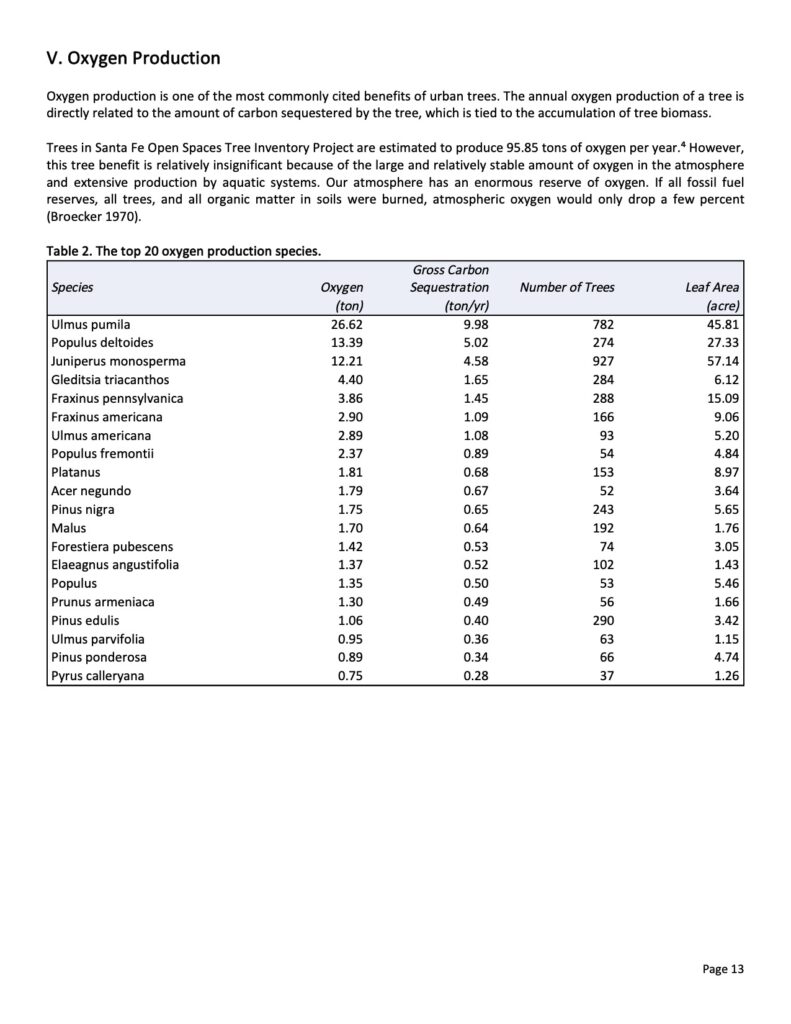
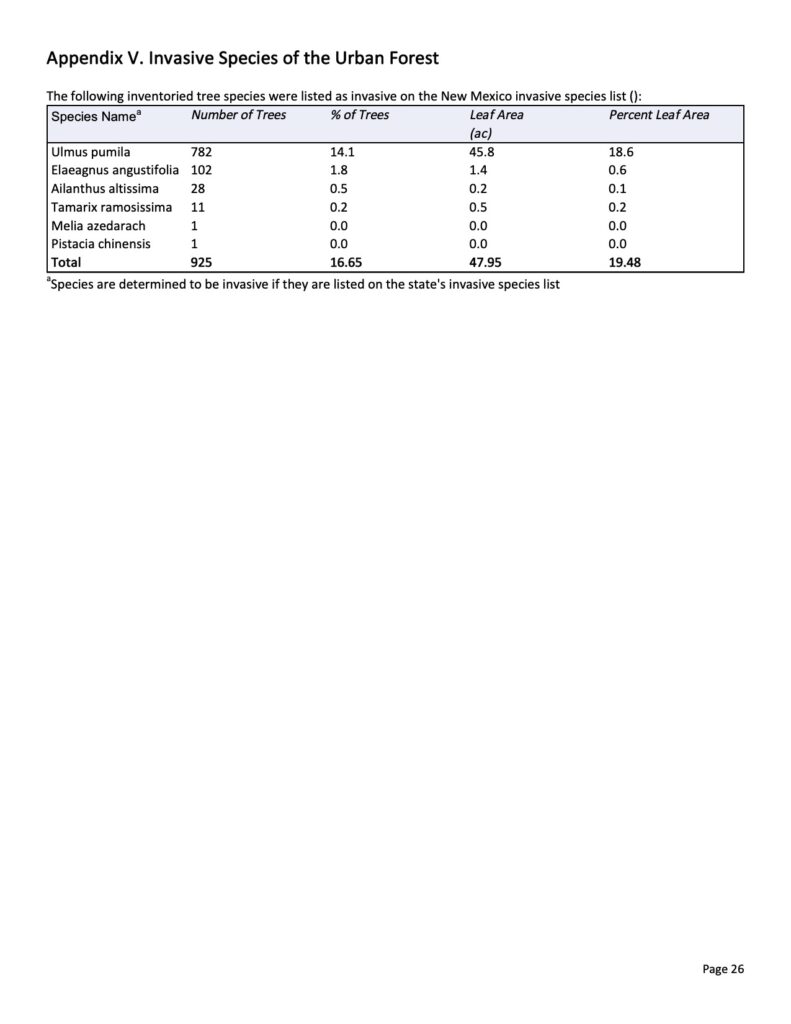
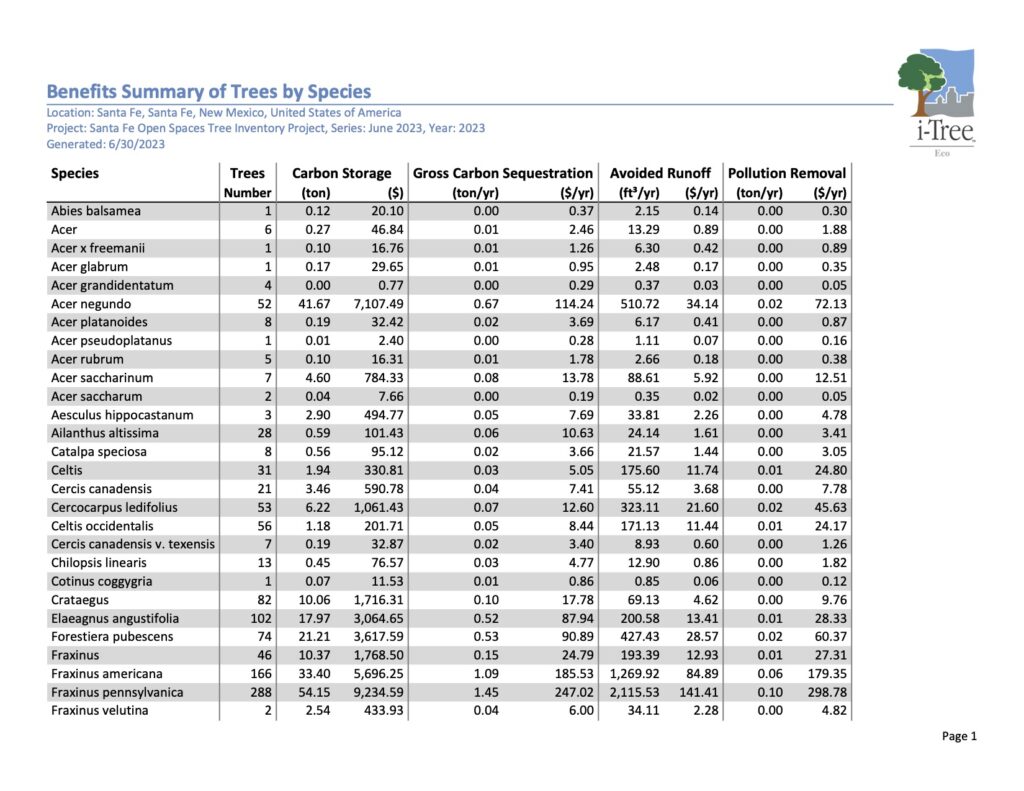
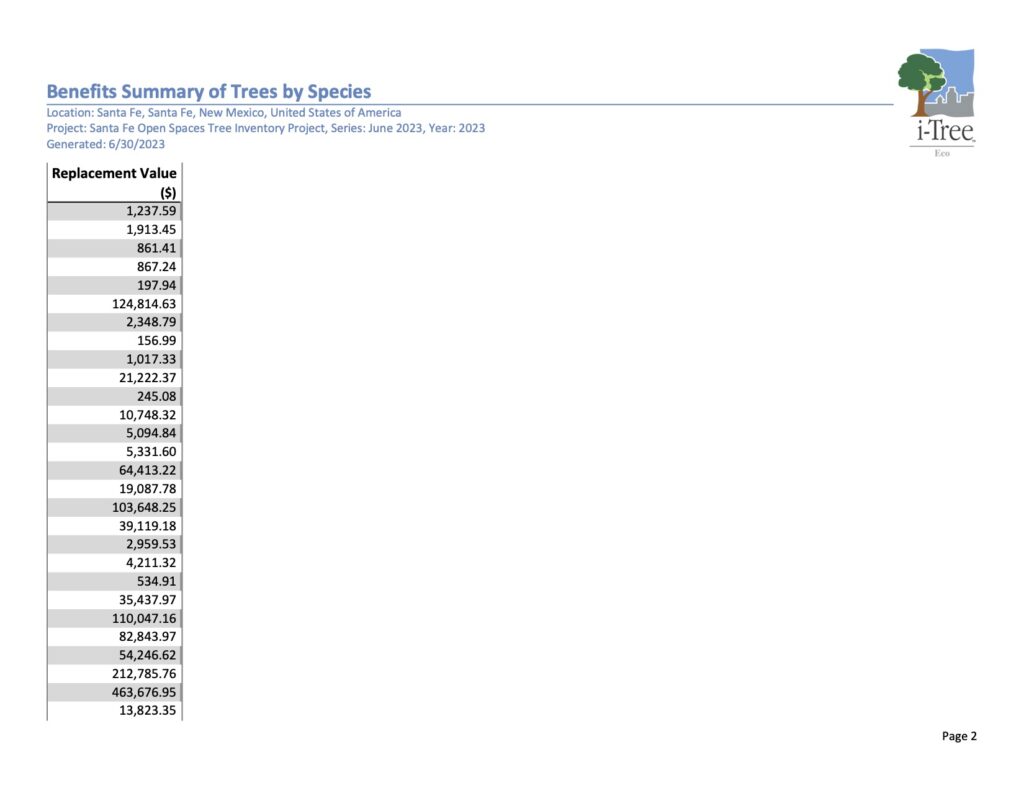
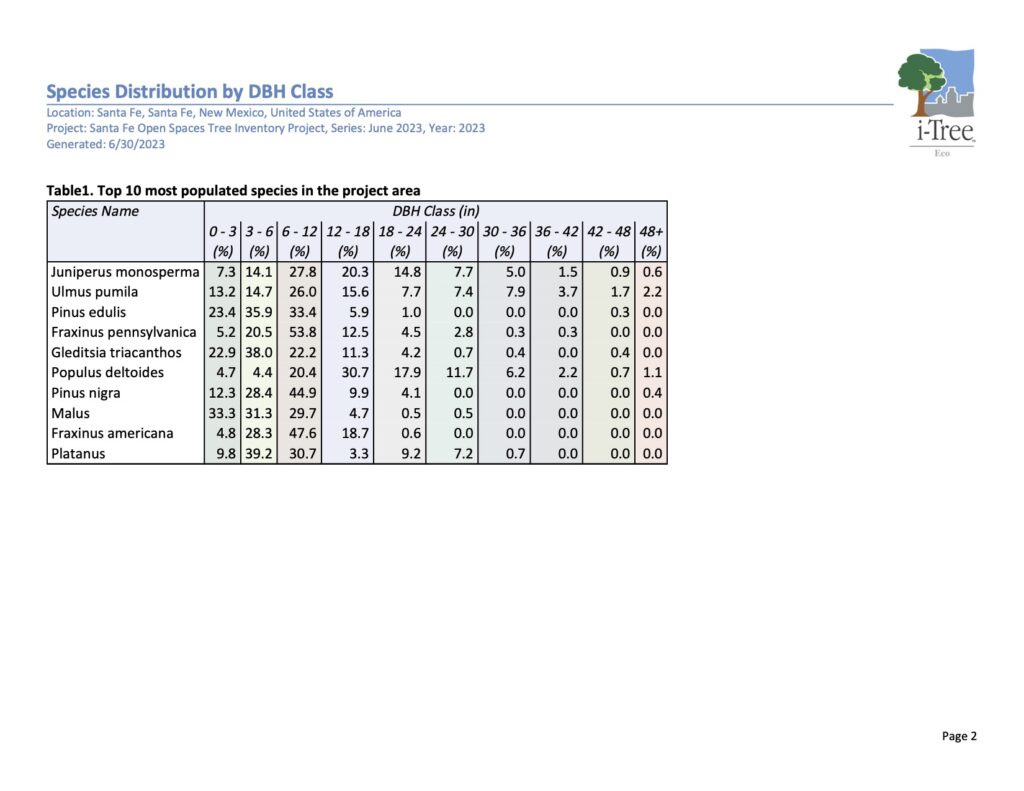
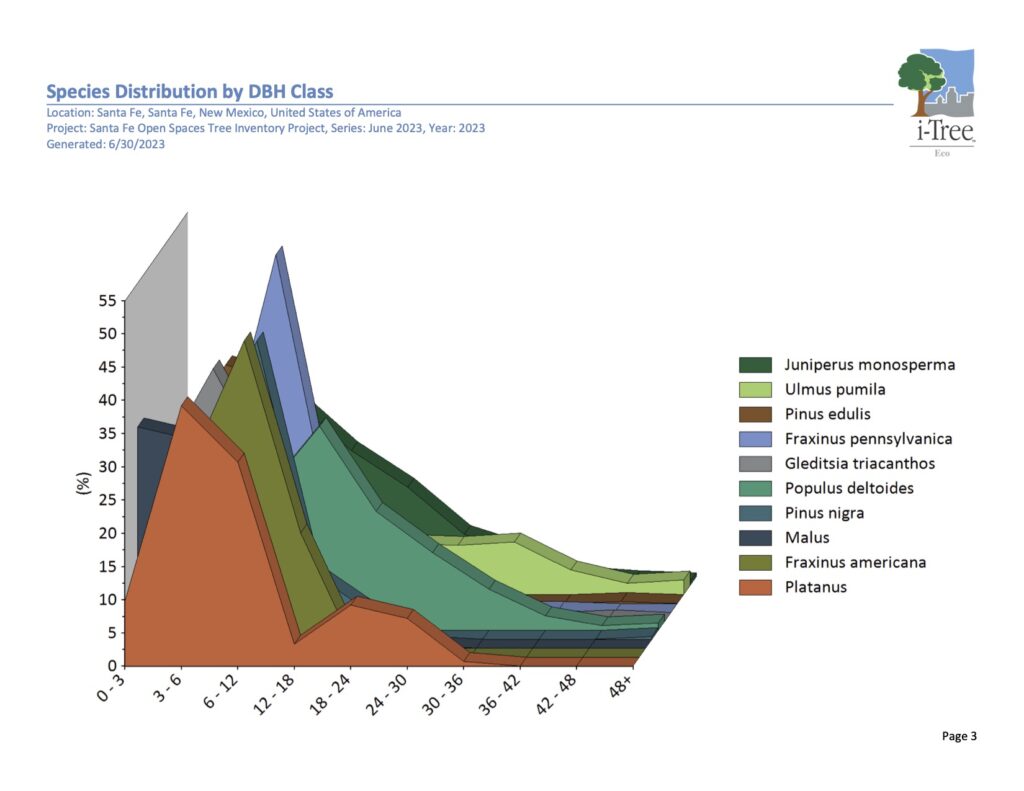
2019 i-Tree Report
Below is a selection of pages from a previous i-Tree report analyzing trees in Santa Fe’s public spaces. To download the full report, please visit our Scholarly Articles and Reports page under the Urban Forestry Research menu, or click the button here.
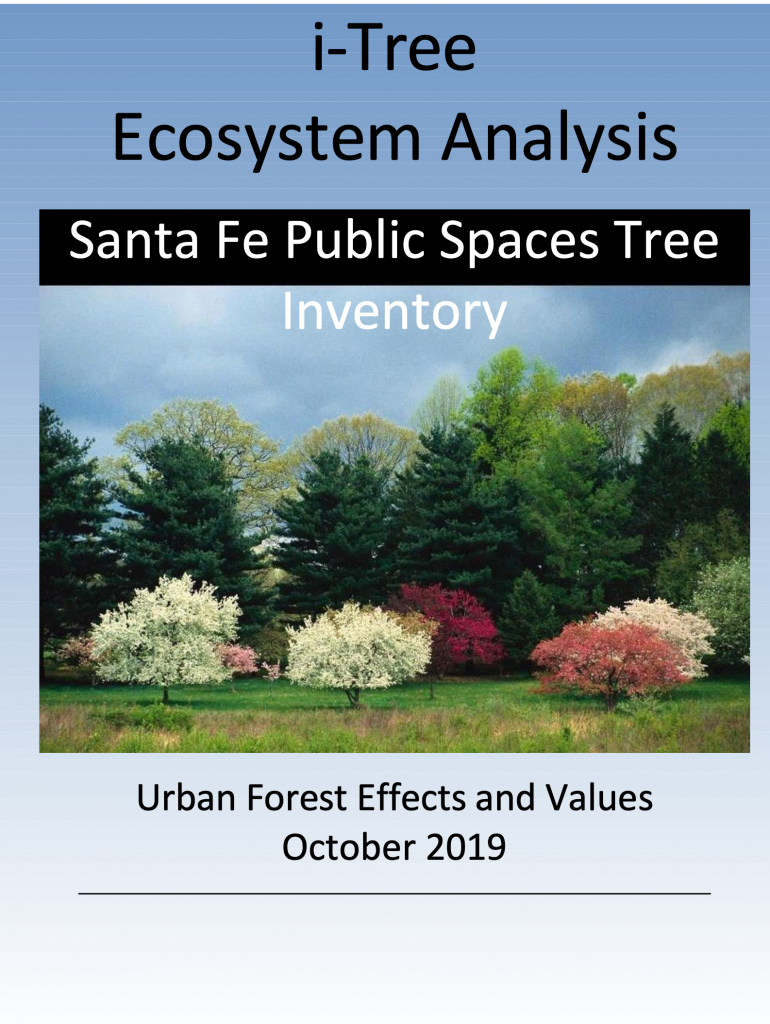
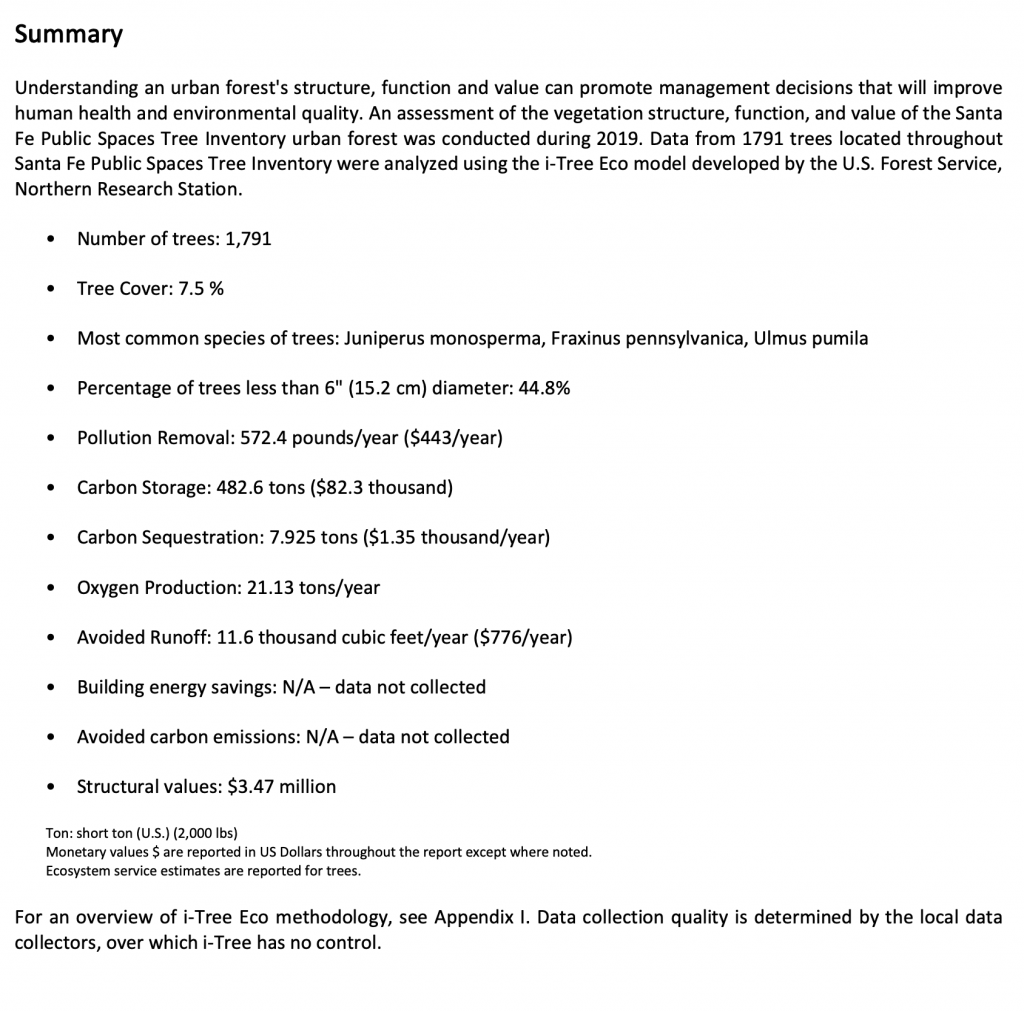
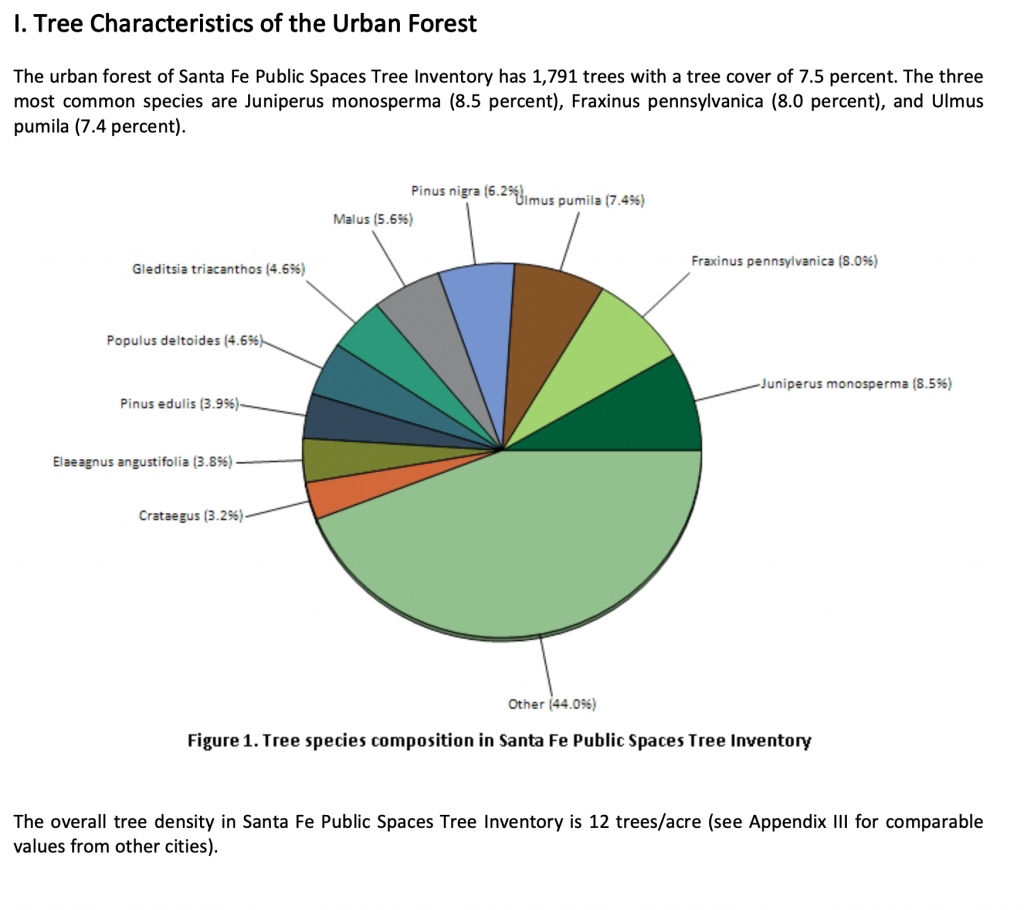
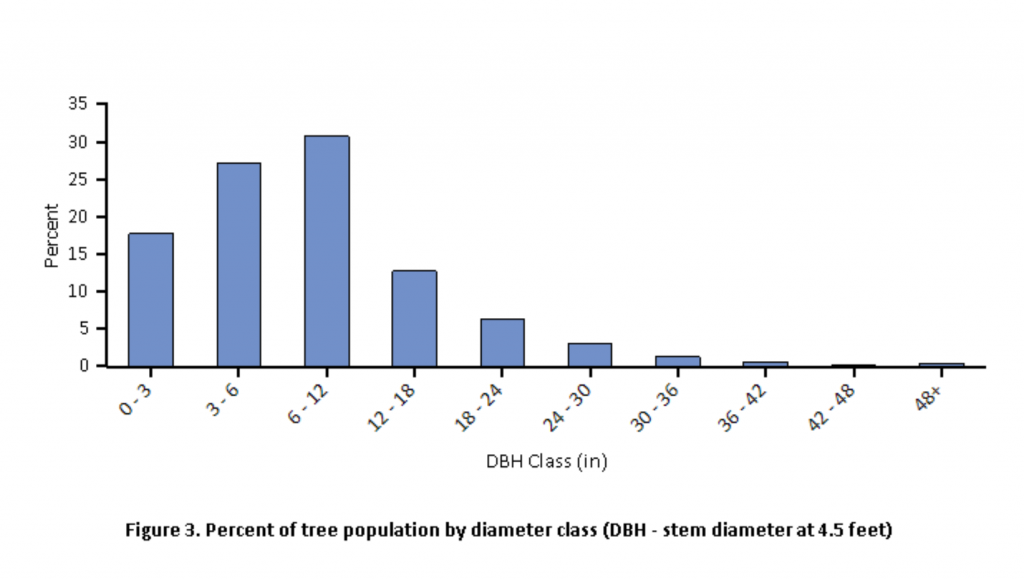
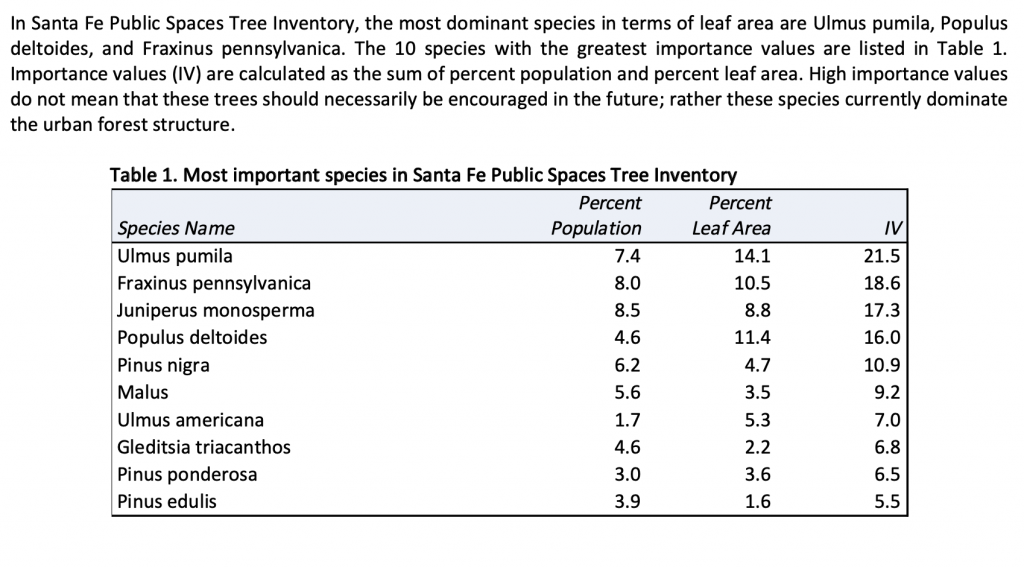
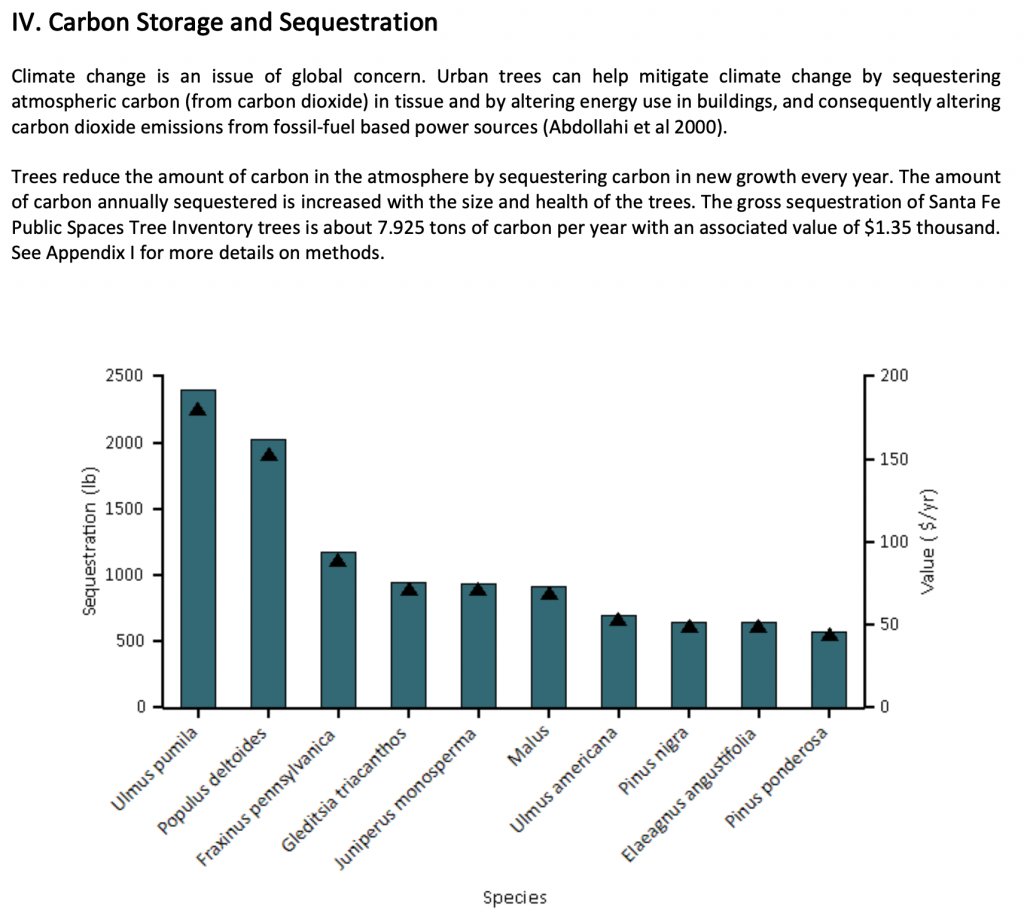
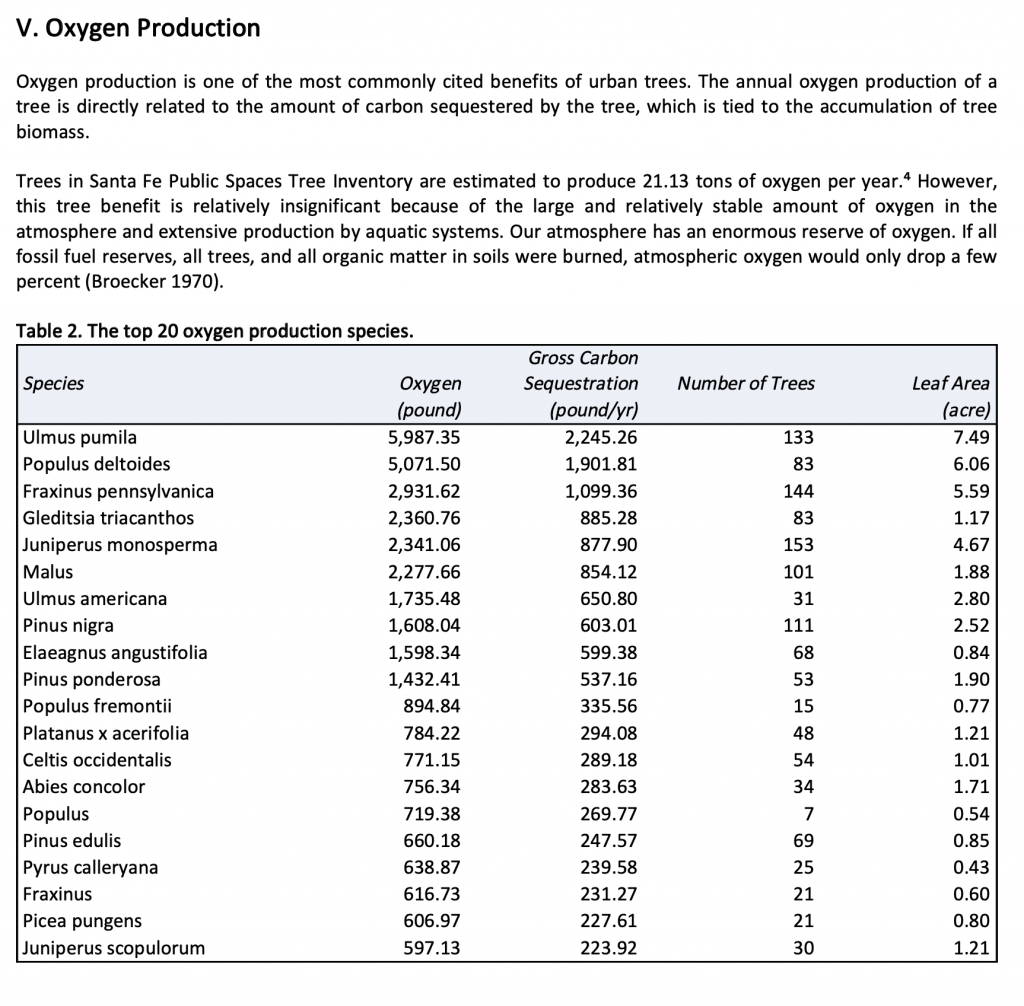
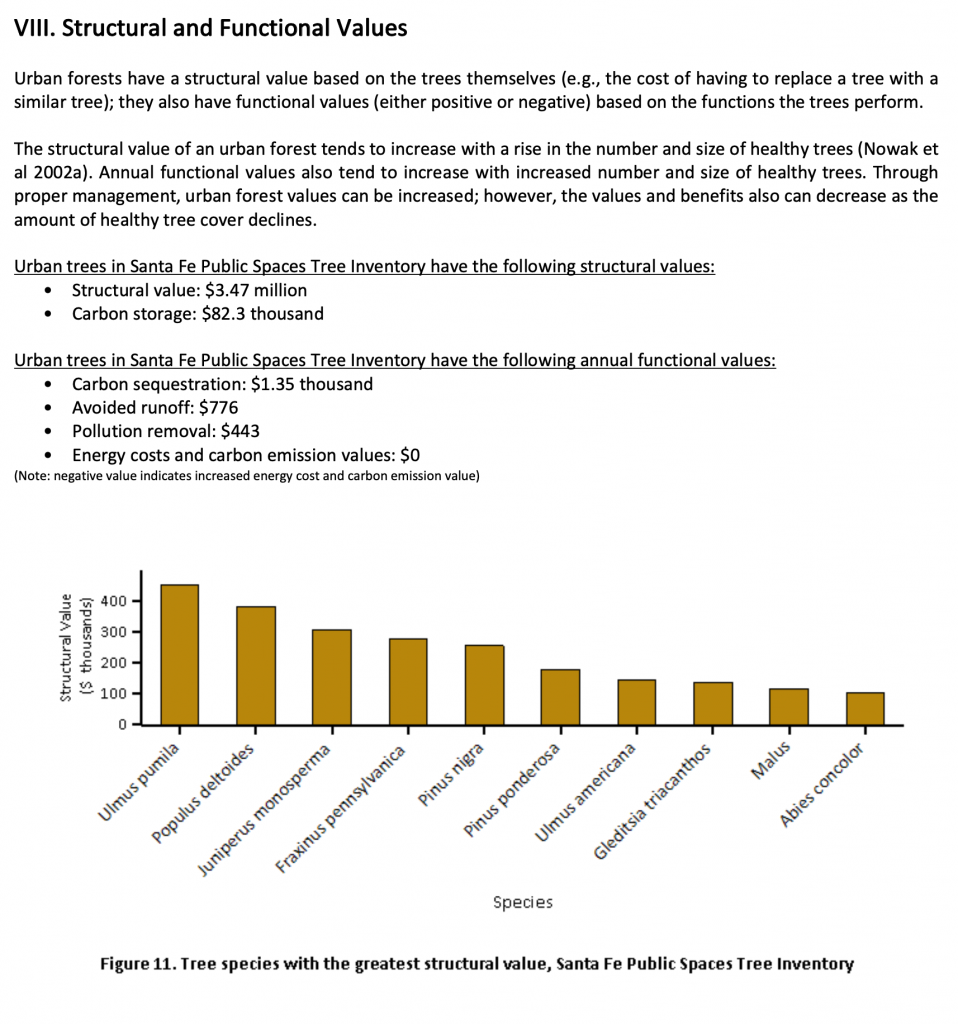
Species Selection
Placement Perfection
Factoring energy efficiency into design helps place trees where they are cooling buildings on hot days. Trees need a minimum of 1500 cubic feet of non-compacted soil for optimal health. Accounting for growth, the tree will provide exponential value over time.
i-Tree Design is a tool that helps with tree placement for energy efficiency based on species, solar impact, and growth over time.
